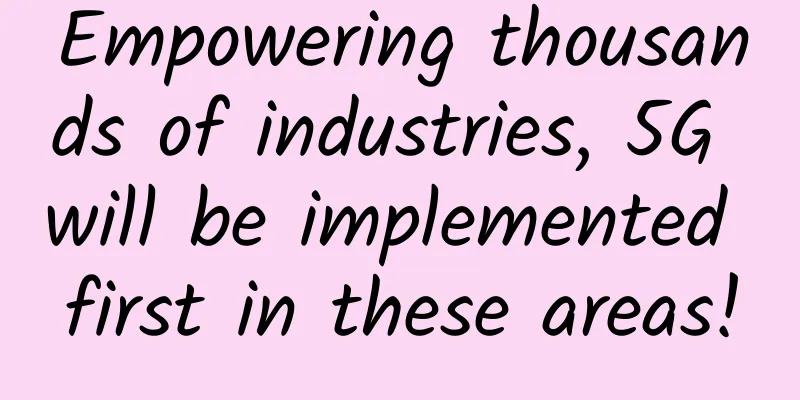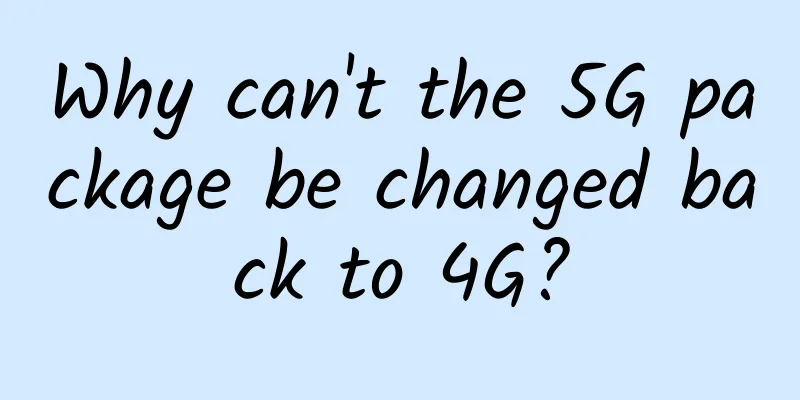5G and IoT set off a revolutionary wave and provide new value

|
[51CTO.com Quick Translation] In today's era, the fifth generation mobile technology (5G) and the Internet of Things (IoT), as two major macro technologies, have rapidly transformed from ideal visions to practical applications. 5G offers download speeds 2.7 times faster than 4G and can send data to up to 1 million devices per square kilometer, compared to 100,000 devices per square kilometer on today’s 4G networks. These devices include not only smartphones and tablets, but also industrial sensors, wearables, medical devices, and vehicles, bringing unprecedented services and capabilities to businesses and governments. While we won’t see these applications in the short term, the infrastructure is already being deployed and will continue to expand in the coming years. The number of IoT devices is expected to increase from 7 billion in 2018 to 22 billion in 2025. Market research firm Gartner predicts that by 2020, the number of connected devices will be 26 times the number of people, while consulting firm McKinsey reports that 127 devices are connected to the Internet every second around the world. The exponential growth of 5G network connectivity brings about a technological transformation similar to the transition from typewriters to computers, as it enables a single-function device (such as a pressure sensor in a pipe) to digitally automate services (such as detecting a leak and sending a notification to regulators, alerting third-party contractors to make repairs). Many believe that 5G is more than just a network, it will build an entire ecosystem of fully connected smart sensors and devices. According to a new study commissioned by Qualcomm and conducted by MIT Technology Review, 5G's contribution to global GDP between 2020 and 2035 is expected to be close to the current size of India's entire economy. Here are just a few of the ways 5G and IoT will deliver new value to business and society. Manufacturing and related products From both a revenue and cost perspective, the manufacturing industry will benefit from 5G and IoT. On the revenue side, these technologies will allow manufacturers to produce a large number of new connected products to create unprecedented services. For example, designing and manufacturing products with augmented/virtual reality (VR) functions to provide more auxiliary services such as maintenance. In terms of cost savings, 5G and IoT will enable smart factories, where data from sensors can improve production line efficiency, reduce energy consumption, and enable time-sensitive control of key operational processes. According to a recent report released by Oracle Communications, 80% of 265 business leaders in 11 countries believe that 5G will reduce costs while generating new sources of revenue. Smart City 5G and IoT have real potential to create smart cities, where new applications and services on smart city networks can improve citizens' lives. If you are a sports fan, driving to a sold-out game, in a city equipped with 5G and IoT, you can receive real-time notifications of available parking spaces on the way. Through video analysis and artificial intelligence (AI), traffic signals and traffic flow can be dynamically adjusted to reduce the idle time of cars at red lights, thereby reducing congestion and travel time. At the same time, it improves safety and reduces pollution by alleviating road traffic peaks. Internet of Vehicles Connected car systems can not only dramatically change the way we commute; it can also create more efficient, safer, and more autonomous transportation. Self-driving cars are expected to be a major use case for IoT and 5G. Not only will they provide the ability to drive autonomously, but they will also include new services such as collecting more real-time, granular data about the health and performance of the car. Some insurance companies have already provided discounts and promotions to drivers who drive safely based on the data from the vehicle terminal. Similarly, 4S repair agencies can also track the working condition or failure of the car in real time, proactively notify the owner of the need for repairs, and make preparations for the repairs in advance. While manufacturers, software companies and related research institutions (robotics labs) have been collaborating and competing for years to get commercially viable self-driving cars on the road, 5G provides new opportunities for deploying autonomous driving applications, even up to SAE Level 4 and 5. Unmanned driving and remote control are possible on any road and in any conditions. Car owners can use or even rent such vehicles to provide ride-sharing services, which will significantly reduce the cost of owning a car. Telemedicine 5G's faster network speeds and lower latency will allow doctors to treat patients remotely, reducing the risks of network outages, disconnections and time delays. It will promote the adoption of telemedicine services, such as sharing large digital images to remote areas and performing remote robotic surgery. These services not only save time and money, they save lives, too. 5G bandwidth allows large files, such as those generated by PET scanners, to be quickly transferred to specialists for urgent remote consultations. A recent report by Market Research Future predicts that the telemedicine industry will achieve a 16.5% compound annual growth rate from 2017 to 2023, driven by an increased demand for healthcare services in rural and underserved areas, which is only possible with 5G and IoT. Perhaps the promise of this technology is to give people more autonomy. Anthem research shows that 86% of doctors say that wearable health monitors increase patient engagement in managing their own health. As a result, wearable devices are expected to reduce hospital costs by 16% in the next five years. Many people believe that this is just the beginning of a technological revolution, and 5G and IOT will give people a healthier, happier, and more efficient living space. Original title: The 5G And IoT Revolution Is Coming: Here's What To Expect, Author: Randal Kenworthy [Translated by 51CTO. Please indicate the original translator and source as 51CTO.com when reprinting on partner sites] |
<<: Where is the future research direction of communications?
Recommend
Preparing for 5G: The three major operators are busy withdrawing 2G from the network
Domestic operators will launch 5G networks in 202...
Easy-to-understand illustrated network knowledge - Part 2
Continuing from the previous article "Easy...
SDN plays an important role in 5G networks
In many ways, 4G networks are already falling beh...
Denodo Named a Leader in the 2021 Gartner Magic Quadrant for Data Integration Tools for the Second Consecutive Year
Beijing, September 7, 2021 - Denodo, a leader in ...
DediPath: 50% off all VPS/HybridServers, starting at $1.75 per month, multiple data centers in Los Angeles/San Jose, etc.
DediPath's spring promotion is still ongoing,...
CCTV's Spring Festival Gala in the Year of the Ox will use "cloud" broadcasting for the first time
According to CCTV News Client, the first rehearsa...
Energy-saving building 5G solutions are the key to green buildings
Building equipment suppliers are prioritizing gre...
Star Domain CDN won the 2016 "Most Trustworthy CDN Solution Award"
[Original article from 51CTO.com] Recently, Star ...
You know IPv4, but how much do you know about the new IPv6?
According to Google user statistics, as of June t...
Commercial CDN returns to its original intention: focus on details and maximize distribution efficiency
On October 20, Live Video Stackcon 2017 was held ...
Why is 6G research and development important in the digital economy era?
5G’s unfinished business needs to be completed by...
Can IPTV also have a nationwide network?
IPTV is good, everyone knows it! The number of IP...
5G and IoT set off a revolutionary wave and provide new value
[[284710]] [51CTO.com Quick Translation] In today...
6 ways to remove duplicate URLs! (with detailed code)
[[341325]] This article is reprinted from the WeC...
spinservers Spring Festival promotion: 100M-10Gbps unlimited traffic servers starting from $119, San Jose data center
To celebrate the traditional Chinese New Year, sp...









